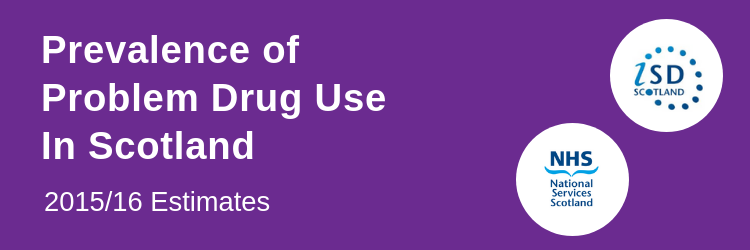
A report estimating the prevalence of problem opioid and benzodiazepine use in Scotland has been published.
The study, carried out by Information Services Division (ISD) Scotland, estimates that between 55,800 and 58,900 people aged 15 to 64 had a drug problem during April 2015 to March 2016 – representing an estimated prevalence rate of approximately 1.62% of the Scottish adult population.
For these figures, problem drug use is defined as the problematic use of opioids (including illicit and prescribed methadone use) and/or the illicit use of benzodiazepines, and implies routine and prolonged use as opposed to recreational and occasional drug use.
Researchers combined data on people who had accessed drug treatment services, hospital admissions and criminal justice social work to estimate prevalence, which is inherently difficult to quantify because of the nature of illicit substance use.
The study notes a decline in the number of people with a drug problem in Scotland since the last study which was carried out in 2012-13 and notes that this could be the result of changes in methodology.
The main points of the report are:
- The majority of individuals with problem drug use were male (71%). The prevalence rate amongst males was 2.35%, this compares to 0.92% for females.
- The rate of problem drug use amongst males and females was highest in the 25 to 34 years age group. The prevalence rates for males were higher than for females in each age group. The rate for males aged 15 to 24 was more than four times higher than the equivalent rate for females.
- The highest regional rate was 1.99% in the West of Scotland compared to 1.37% in the South and East, and 1.17% in the North .The estimates suggest that prevalence rates are tending to be higher in the most populated areas of Scotland, which include large urban areas.
- The latest national prevalence rate is lower than was observed for 2012/13. However, due to some changes to the data included for this study and the margin of uncertainty that surrounds the statistical models and assumptions, it is not possible to conclude that a real reduction has occurred.
